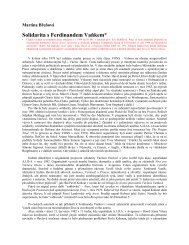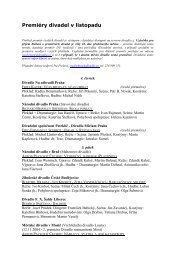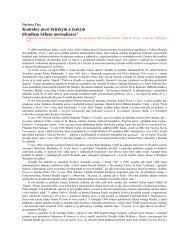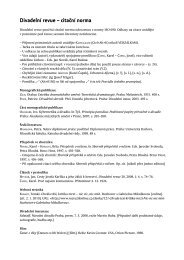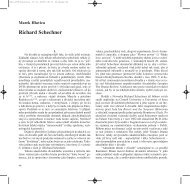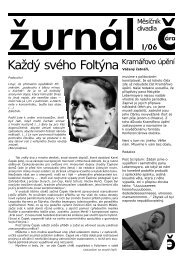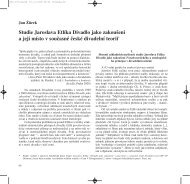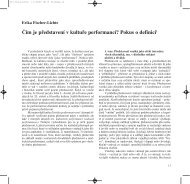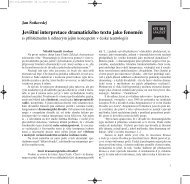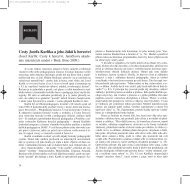METAPHOR AND IRONY 2 - Divadlo.cz
METAPHOR AND IRONY 2 - Divadlo.cz
METAPHOR AND IRONY 2 - Divadlo.cz
You also want an ePaper? Increase the reach of your titles
YUMPU automatically turns print PDFs into web optimized ePapers that Google loves.
Jaroslav Malina<br />
Jaroslav Malina was born in Prague in 1937 and is a set and costume designer,<br />
a painter, printmaker and teacher. He studied from 1957-61 in the Faculty of<br />
Education of Charles University in Prague, and from 1961-64 in the department<br />
of stage design of the Theatre Faculty of the Academy of Performing Arts in<br />
Prague with Professor František Tröster, later teaching there himself (1990-2000)<br />
and serving as Rector (1996-1999). In 1991, 1999 and 2003 he was the General<br />
Commissioner of the Prague Quadrennial. In 1984 he was awarded the Gold<br />
Medal at the International Triennial of Stage Design in Novy Sad in Serbia, and<br />
in 2003 received an Honorary Doctorate from Nottingham Trent University in<br />
Great Britain. He is the author of the expressively fantastic visual stylization of the<br />
film Magpie in Hand (directed by Juraj Herz, 1982), banned under Communist<br />
totalitarianism. He also designs the posters for his productions, which in a confrontation<br />
between the designs and their realization round off a statement about<br />
the visual appearance of the theme of the play. As a representative of action<br />
scenography of the 1970s and 1980s he excelled in researching and using the<br />
special qualities of a variety of materials, integrating them in both set and<br />
costume designs. He made use especially of moldable and shapable draperies<br />
with whose help he achieved an imaginative variability of the environment,<br />
counting on the audience's powers of imagination. He always let himself be<br />
inspired by the space in which he worked. At first he had his doubts about the<br />
proscenium arch stage but later incorporated its architecture into the play. He had<br />
already in his “action” period used elements of painted and pasteboard scenery,<br />
which by irony and paraphrase upset the stylistic unity and metaphorically drew<br />
attention to the ambiguity of the world. From the end of the 1980s painted and<br />
“artificial” elements appears in his work ever more intensely, as does a visual<br />
concept of composition of the whole picture of the stage (the inspiration of reappraised<br />
Baroque illusionism). The principle of play, ironic quality and paraphrase<br />
does not disappear. Some motifs appear in Malina's stage design through the<br />
whole of his work. For example, the screen/wall: with the patina of life, both disturbed<br />
and snow-white pure (made of different materials, including his legendary<br />
use of drapery). The wall in the design for Per Olof Enquist's A Lynx's Hour (2003)<br />
in itself links the authenticity of the 1970s and the visually aestheticized concept<br />
of 1990s. The earthy - as it were burdened - structure of the wall, and the<br />
harmonically effective outlines of a constellation on a blue base associate the two<br />
basic principles of life - earth and heaven.<br />
28



